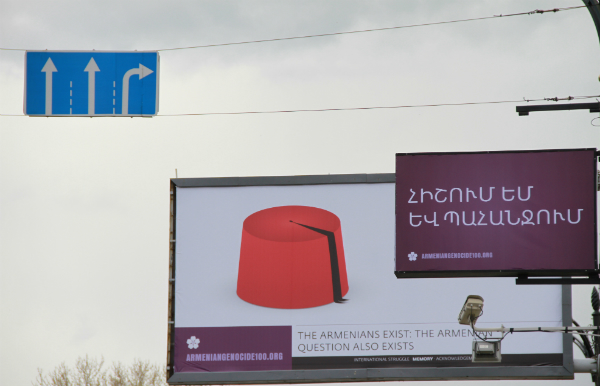The face of Yerevan changed dramatically in the last days of April.
Decorations on the streets, parks, and buildings, and outdoor billboards displayed not goods and services for consumption, but a completely different topic — the centenary of the Armenian Genocide.
In all public venues, the city was sending its residents and guests messages related to the genocide.
Sometimes, such a variety of style and color could be seen on the same street or building that it leaves the impression that one poster contradicts or rules out the other.
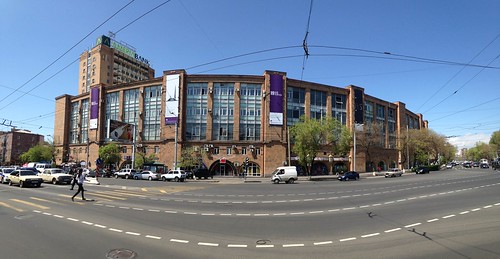
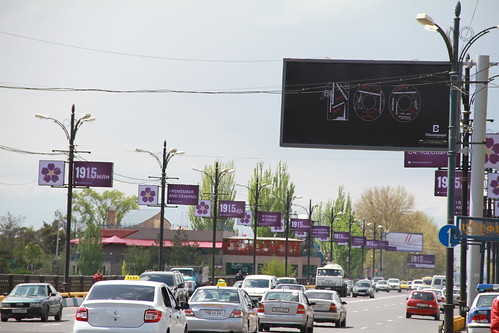

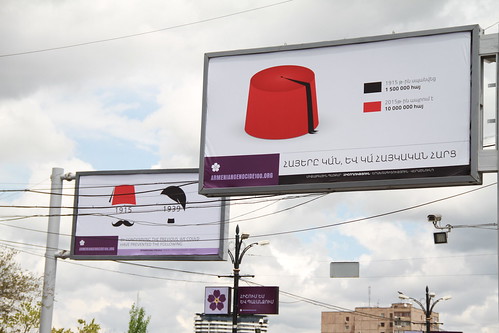
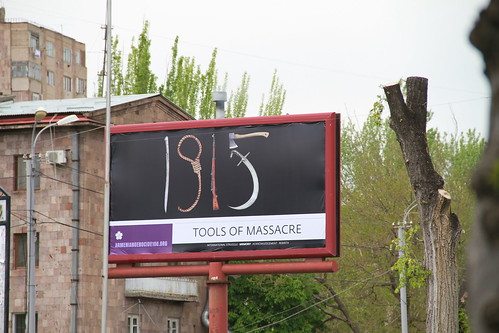
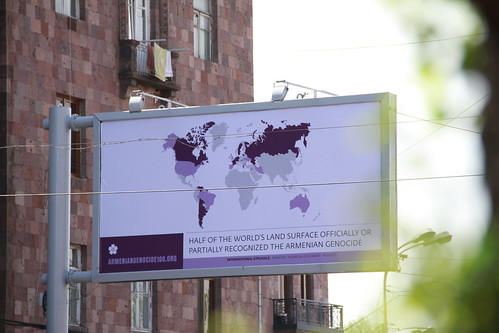
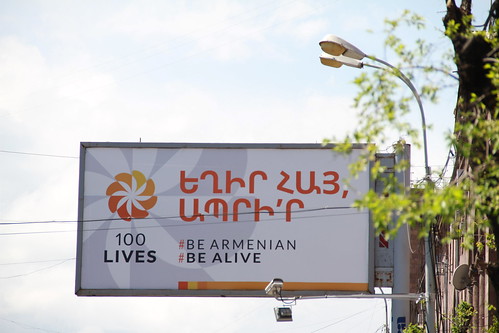
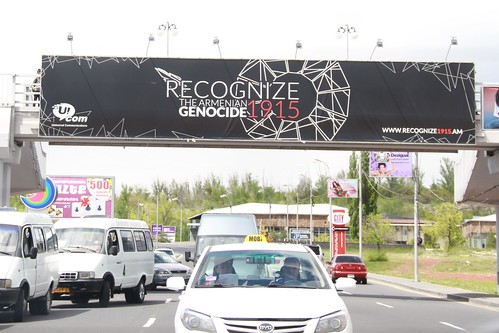

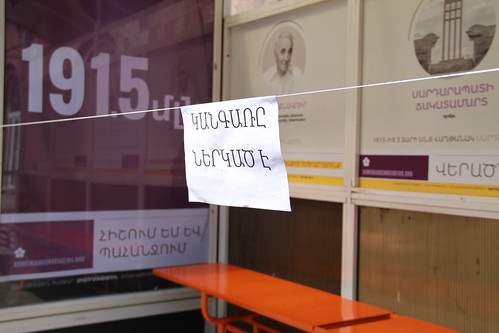

Cars covered with three or four forget-me-not decals and series of billboards that recall a field of forget-me-not flowers can be seen in Yerevan.
All of the written, visual, and ornamented posters of Yerevan create a huge crater of information, which doesn’t so much inform or impart emotions as bombard passers-by with the amount of fragments and its inappropriate use.
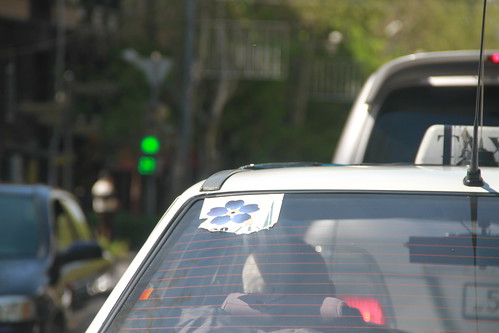
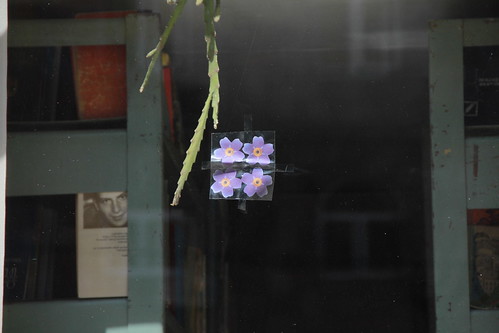
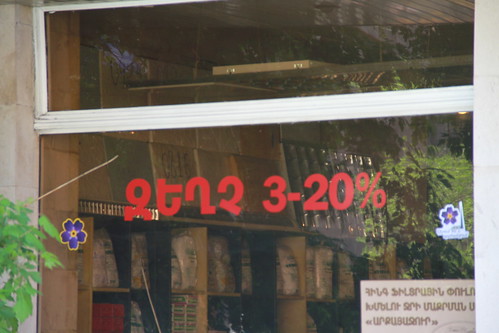

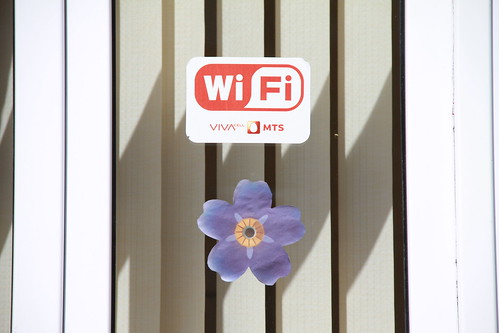
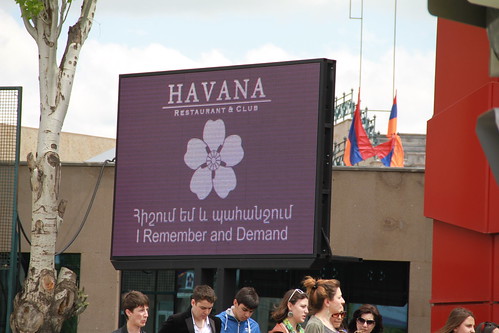
Small and large forget-me-nots have appeared not only on the doors and windows of public transportation vehicles, stores, and restaurants, but also next to news outlets’ logos. There are online news outlets that group news stories related to the Armenian Genocide together, labelling them with the forget-me-not symbol.
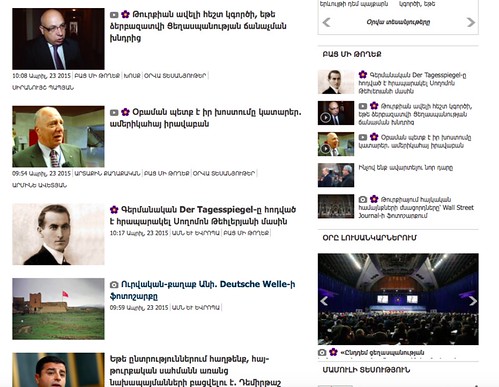
TV stations place the forget-me-not on different parts of the screen; sometimes, a few of them. It even moves. In one case, the number of victims of the Armenian Genocide is increasing on the screen, presumably with the goal of becoming 1.5 million on April 24.
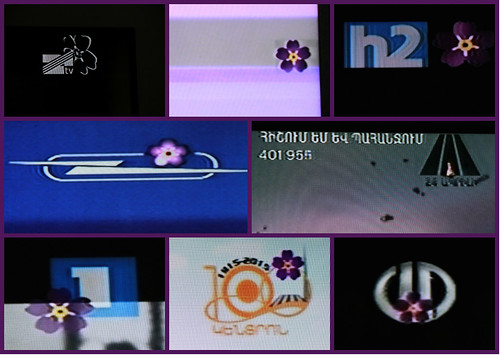
Only in the case of print media and radio is the presence of the forget-me-not not as obvious. In general, however, purple triumphs in all types of media in Armenia this month.
Nune Hakhverdyan
Photos by Sona Kocharyan

